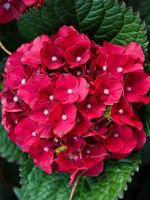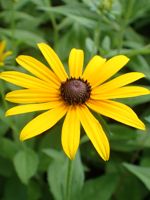Mon-Fri 9am - 5pm Mountain time
Cherry Go Round™ Reblooming Hydrangea vs Black-Eyed Susan
Hydrangea macrophylla Hokomaburlac
Rudbeckia hirta
NOT AVAILABLE THIS SEASON - MIGHT RETURN
NOT AVAILABLE THIS SEASON - MIGHT RETURN
Cherry Go Round Reblooming Hydrangea™ is a compact flowering shrub. The deep red flowers will bloom in late spring and last until fall. The mophead-like flowers add multi season interest to your landscape. The petite form is well suited for urban yards and tight spaces.
Flowers grow on old wood which requires only spent flowers and damaged wood to be removed. The Cherry Go Round Reblooming Hydrangea is part of the Bloomin’ Easy® collection.
On the prairies, some customers will plant the Cherry Go Round Reblooming Hydrangea in pots and over winter them in their garage. They need additional winter protection for the flower buds.
Note: Flower colour may be influenced by the soil pH. In more alkaline soils the flowers will emerge more pink whereas those in acidic soils will be a deep purplish red. They prefer slightly acidic soils with a pH of 5.7-6.5.
Black-Eyed Susan is a striking native wildflower known for its bright yellow, daisy-like flowers with dark center disks. With deadheading, the plant can bloom for an extended period, from mid-summer to early fall. These cheerful flowers attract a variety of pollinators, including bees and butterflies. Adding to its ecological value, the plant also acts as a host for the Wavy-Lined Emerald Moth (Synchlora aerata) and the Silvery Checkerspot (Chlosyne nycteis) butterfly.
While it is typically a short-lived perennial or biennial, the plant freely self-seeds. This allows it to persist in the landscape, particularly in natural areas where it can spread and establish itself. This plant is drought-tolerant, salt-tolerant, and deer and rabbit-resistant, making it ideal for challenging environments. The Black-Eyed Susan is well suited to wildflower gardens, pollinator gardens, as well as slopes, banks, and naturalized areas.

